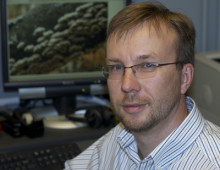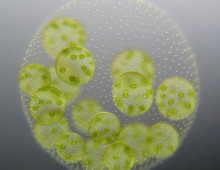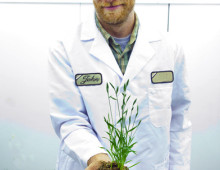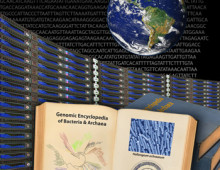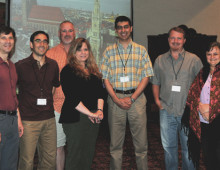Breaking Biomass Better: DOE JGI Sequences Wood Decaying Fungus to Advance Biofuels Prospects
WALNUT CREEK, CA—One of the challenges in making cellulosic biofuels commercially viable is to cost-effectively deconstruct plant material to liberate fermentable energy-rich sugars. The U.S. Department of Energy (DOE) is funding several projects focused on identifying enzymes in organisms that optimally degrade cellulosic feedstocks. One such source are fungi, which break down dead wood and… [Read More]
